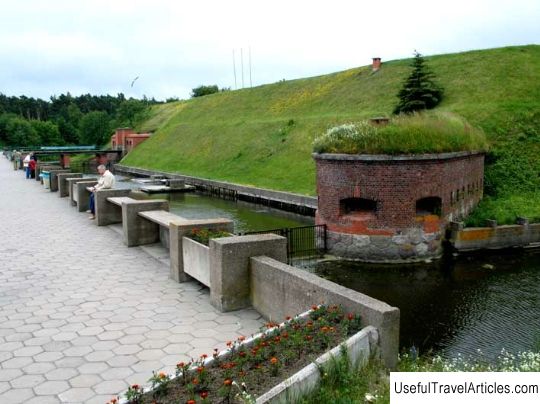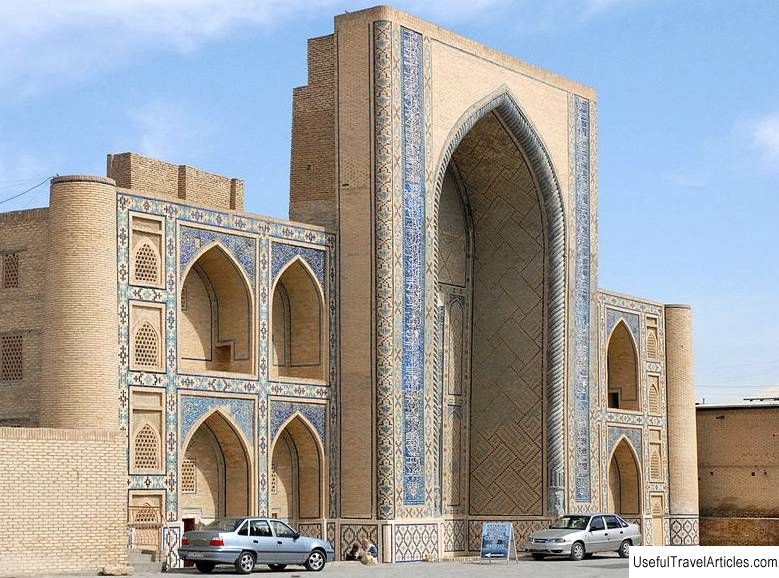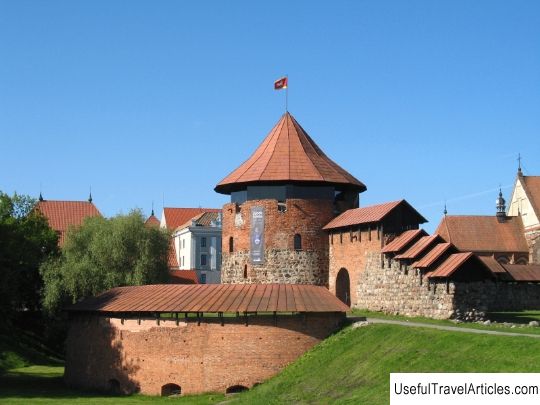Memel Castle (Klaipedos apskritis) description and photos - Lithuania: Klaipedaa
Rating: 8,6/10 (9490 votes) 
Memel Castle (Klaipedos apskritis) description and photos - Lithuania: Klaipeda. Detailed information about the attraction. Description, photographs and a map showing the nearest significant objects. The name in English is Klaipedos apskritis. Photo and descriptionIt is safe to say that the Memel Castle is the only Order's castle located on the territory of Lithuania, which the Order kept with it for quite a long time. The Memel Castle was first mentioned on July 29, 1252, in an agreement between the Curonian Bishop Heinrich and the Master Eberhard von Zeine. By the fall of the same year, a castle made of wood was built at the mouth of the Dane River, which was named Memelburg. The castle was located in a swampy place, and for this reason, in 1253, a stone castle was founded on the right bank of the Dane. In the courtyard of this castle there were stone and wooden buildings, and its walls were kept by embankments, moats and palisades. After some time, the castle was given into the hands of the Teutonic Order in exchange for the lands that belonged to him in Estonia. In 1379, Lithuanian troops under the leadership of Prince Keitut burned down the castle and the entire city. The castle was soon restored. After the end of the Battle of Zalgirisi in 1410, at a time when the order no longer existed as a military force, in accordance with the Treaty of Meln in 1422, Memel remained in the hands of the order. In the 15th century, the Memel Castle was adapted for firearms and was almost no different from the rest of the Order castles in East Prussia: massive red brick walls were decorated with ornaments and reinforced with buttresses. But, despite the measures taken, in 1455 the castle was occupied by the Samais. In the 16th century, combat artillery was significantly improved and the defensive system of the Memel castle was greatly outdated. for this reason, in 1516-1519, the castle was subject to fortification works carried out with the help of earth embankments with bastions. From 1538 to 1550, the castle was almost completely rebuilt. The necessary material was obtained as soon as the city's stone church was destroyed. Memel Castle was surrounded by a wide defensive moat, through which a wooden bridge was laid, which was reinforced with the same earthen embankments. When the castle was rebuilt, it acquired the shape of an irregular quadrangle. There were five towers at the castle, and in the northern part there was a tower 30 meters high in the place where the prison was located. In the western part there was a Large Arsenal Powder Tower. In the corners of the buildings and near the gates were the round towers of the Elector, as well as the Small Powder Tower. The castle had an arsenal room, chapel and food warehouse for food. Memel Castle was rebuilt towards the end of the 16th century. Then it was the leading bastion castle in the Eastern Baltic. But during the 17th century, the castle was often attacked and burned. During 1756-1763, the last fortification works were carried out on the territory of the castle. At this time, the embankments were updated and the height of the bastions themselves was increased. At a time when the Seven Years' War continued, namely in 1757, Russian troops seized the Memel Castle. As soon as the war was over, the castle fell into disrepair almost completely and lost its military purpose. In 1770, the outer fortifications were demolished; buildings were used for the needs of the city. During 1872-1874, the last remaining buildings were demolished. During the Soviet era, the remains of the castle could not be visited and watched because the Memel Castle was located on the land of the Experimental Shipyard, the zone of which was very difficult to get into without special permission. In 1994, the Lithuanian government decided to move the factory building to another zone until 2009. In 1998, an architectural competition was held to bring the settlement into proper condition. In 1999, a competition was held to restore the Great Tower. The winners of the competition were a group of architects led by S. Manomaitis, who proposed to build the tower in compliance with all volumes, silhouettes and heights of the former tower. However, to achieve this goal, it was proposed to use an unconventional material - glass (instead of brick). This is exactly how, according to the authors, in the Memel Castle, namely in its tower, ancient history and the latest technologies of the 21st century must merge. Since August 2002, a museum has been operating on the territory of the castle.        We also recommend reading Promenade Zattere (Zattere) description and photos - Italy: Venice Topic: Memel Castle (Klaipedos apskritis) description and photos - Lithuania: Klaipedaa. |




